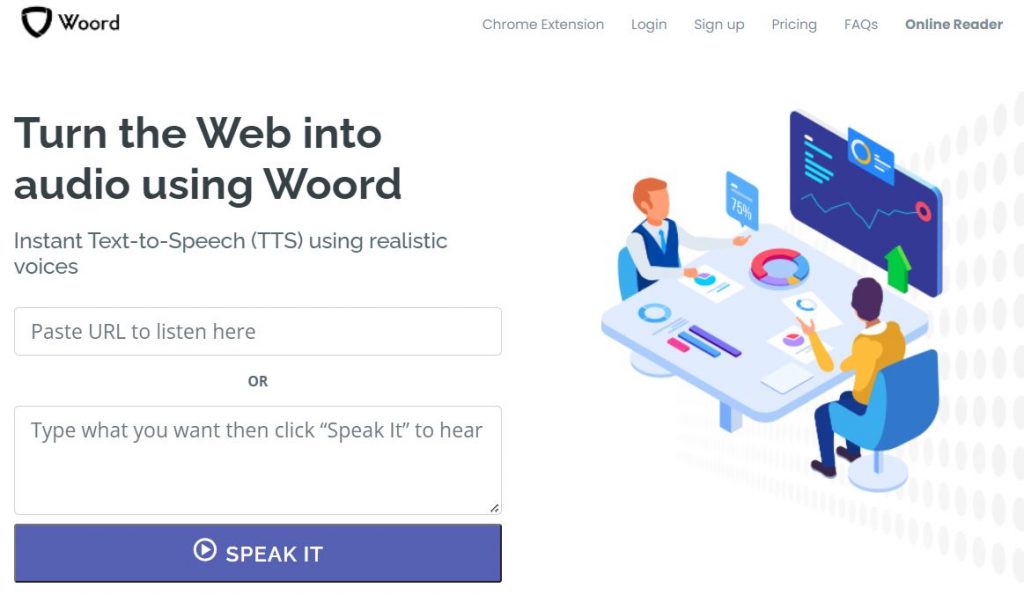With the world moving forward to a speech-first scenario, people and businesses are interested in technologies regarding voice, for example, voice artificial intelligence. What is it?
Voice artificial intelligence or voice AI is a term used to describe the mechanism and outcome of synthesising voices with deep neural networks and machine learning. Thus, this emerging technology relates to the intersections between artificial intelligence and text to speech.
Text to speech widgets, also known as TTS, read aloud any text-based material by producing artificial human discourse. As a result, people can decide how they prefer to access content and create a voice for their projects or even themselves.

Businesses get on board the latter trend. When companies obtain custom voices, they can use them in several voice-first devices and media, including voice AI assistants, IVR systems, interactive in-store displays, e-learning materials, TV, radio, online ads and conversational robots, among others. Consequently, acquiring voice artificial intelligence delivers a consistent experience that follows the user throughout the day, increasing awareness, trust, and loyalty without the expense of continuous talent contracts.
Therefore, if you are either a forward-thinking individual or organisation looking for excellent AI voices that will enhance “multisensory” experiences, you need to count on an exceptional TTS tool that differentiates from its competitors when it comes to a visual-free environment. Here’s our favourite pick for voice artificial intelligence gadgets:
Woord
Woord is an artificial intelligence-based voice generator with the ability to create all-new, custom voices from plain text, pdf, txt, doc(x), pages, odt, ppt(x), ods, non-DRM epub, jpg, and png files. To begin with, you may select among 28 languages, including some regional accents: English, Spanish, Portuguese, French, German, Russian, Turkish, Hindi, Italian, Japanese, Chinese, Vietnamese, Arabic, Dutch, Norwegian, Korean, Polish, Swedish, Bengali, Danish, Welsh, Filipino, etc. Moreover, you can decide whether you desire a male, female or androgynous.
Furthermore, you can personalise any of the fifty high-quality realistic voices Woord offers. Firstly, you can choose the speed of your mouthpiece, for instance, speeding up or slowing down. Secondly, you have the option to pick your speaker’s preferred device profile (e.g. IVR, Smarthome and GPS, to name a few). Besides, the SSML editor allows you to manipulate and rearrange your spokespeople’s speech qualities like emphasising words, whispering sentences, pausing, breathing, changing phonemes or pronunciation, and so on.
Last but not least, Woord provides users with additional features such as OCR technology, MP3 download, Chrome plugin, and API access, making it a full-packed, state-of-the-art text to speech software for converting text-based content into audio. Is it a lot of data to sift through? Well, maybe you want to focus on the following information: Woord has different –affordable– billed plans for personal and business use cases. But, if you like to test it before spending a penny, the platform welcomes you to try most of the features for free. You only need to register to receive up to 20,000 characters of text to generate two audios.
Do you better understand voice artificial intelligence? Did you find this technology interesting to implement in your daily routine or business? We want to know!


